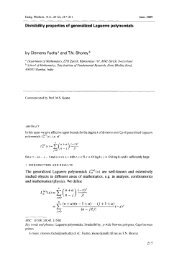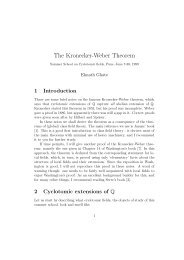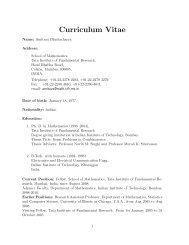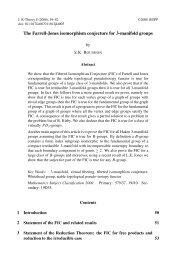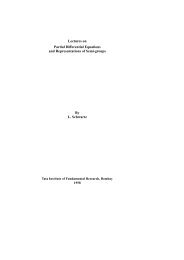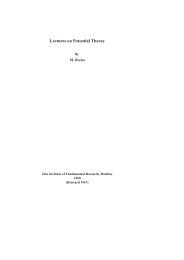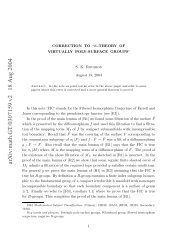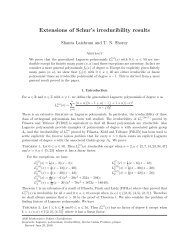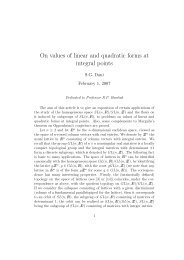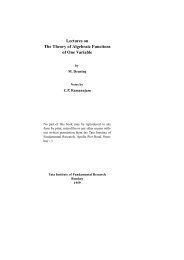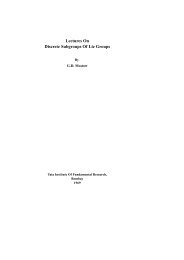Weil Representation, Howe Duality, and the Theta correspondence
Weil Representation, Howe Duality, and the Theta correspondence
Weil Representation, Howe Duality, and the Theta correspondence
You also want an ePaper? Increase the reach of your titles
YUMPU automatically turns print PDFs into web optimized ePapers that Google loves.
5 <strong>Howe</strong> Conjecture in <strong>the</strong> Archimedean caseThe <strong>Howe</strong> conjecture makes sense in <strong>the</strong> archimedean case too. In this case oneworks with <strong>the</strong> Harish-Ch<strong>and</strong>ra module of <strong>the</strong> unitary metaplectic representationdefined on square integrable functions on a maximal totally isotropic subspace byformulae exactly similar to <strong>the</strong> one in <strong>the</strong> non-archimidean case. We give below <strong>the</strong>Harish-Ch<strong>and</strong>ra module in <strong>the</strong> Fock model which is more convenient to work with.We will work with <strong>the</strong> two sheeted covering Sp(n, ˆ R) of Sp(n, R) <strong>and</strong> <strong>the</strong> inverseimage Û(n) of U(n) ⊂ Sp(n, R) as <strong>the</strong> maximal compact subgroup of Sp(n, ˆ R).Let sp be <strong>the</strong> Lie algebra of Sp(n, ˆ R) <strong>and</strong> u, <strong>the</strong> Lie algebra of U(n). One has <strong>the</strong>Cartan decompositionsp = u ⊕ p = sp 1,1 ⊕ sp 2,0 ⊕ sp 0,2 ,with u = sp 1,1 . The Fock model of <strong>the</strong> <strong>Weil</strong> representation of (sp, Û(n)) is realisedon <strong>the</strong> space S of polynomial functions on C n , with representations of u, p 2,0 , p 0,2given as follows.(1) u operates via <strong>the</strong> differential operatorsz i∂+ 1 ∂z j 2 δ ij, 1 ≤ i, j ≤ n,(2) p 2,0 operates by multiplication by z i z j , 1 ≤ i, j ≤ n,(3) p 0,2 operates via <strong>the</strong> differential operators∂ 2∂z i ∂z j, 1 ≤ i, j ≤ n.The action of Û(n) is <strong>the</strong> st<strong>and</strong>ard representation of U(n) on polynomials onC n twisted by a character of Û(n) which does not factor through U(n).Let now (G, G ′ ) be a dual reductive pair in Sp(n) with maximal compact subgroupK in Ĝ <strong>and</strong> K′ in Ĝ′ such that K · K ′ is contained inÛ(n), <strong>and</strong> let g be<strong>the</strong> Lie algebra of G, <strong>and</strong> g ′ of G ′ . For any irreducible, admissible (g, K)-module(π, V π ), let S(π) <strong>and</strong> S[π] be defined as in <strong>the</strong> non-archimedean case but now takinghomomorphisms in <strong>the</strong> sense of (g, K)-modules. Then <strong>Howe</strong> proves in [H2] thatjust as in Lemma 4.2,S[π] ∼ = π ⊗ σ 0 (π)17



